#lower sorbian
Text
Deutschribing Germany
Languages
Most languages native to Germany belong to the Germanic family, but some of them are Slavic languages. German is the official language, with over 95% of the country speaking Standard German or one of its dialects as their first language.
There are six recognized minority languages: Danish, Lower Sorbian, North Frisian, Romani, Saterland Frisian, and Upper Sorbian. The main immigrant languages spoken are Arabic, Dutch, Greek, Italian, Kurdish, Polish, Russian, Serbo-Croatian, Tamil, Turkish, and Ukrainian.
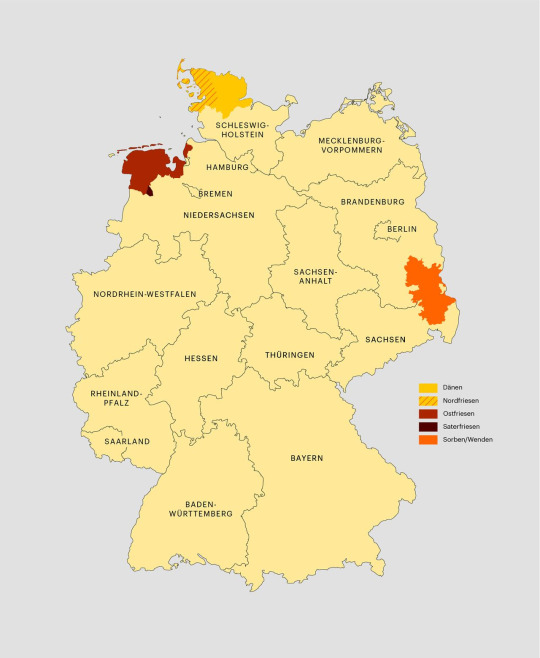
German (Deutsch)
German belongs to the West Germanic group of languages and is the native language of 95 million people. It is the official language in Austria, Belgium, Germany, Liechtenstein, Luxembourg, and Switzerland, as well as South Tyrol in Italy, and is a recognized minority language in ten countries from four different continents.
German Standard German is the standardized variety of German spoken in Germany. Its pronunciation is similar to the German spoken in Hanover. Its alphabet has 30 letters: a b c d e f g h i j k l m n o p q r s t u v w x y z ä ö ü ß. Most German vocabulary is of Germanic origin, but around one fifth was taken from French or Latin. German dialects and varieties are explained in detail in this post.

Romani (rromani ćhib)

Sinte Romani (sintitikes) is the variety of Romani spoken in Germany and neighboring countries. It belongs to the Northwestern Romani dialect group, which in turn is part of the Indo-Iranian branch of the Indo-European family. It is spoken by around 195,000 people and is not mutually intelligible with other Romani varieties.
There is no standard pronunciation or grammar. The alphabet has 31 letters: a b c č čh d dž e f g h i j k kh l m n o p ph r s š t th u v x z ž.
Danish (dansk)
Danish is a North Germanic language with 6 million native speakers. It is the official language of Denmark and the Faroe Islands and a recognized minority language in Schleswig-Holstein and Greenland.
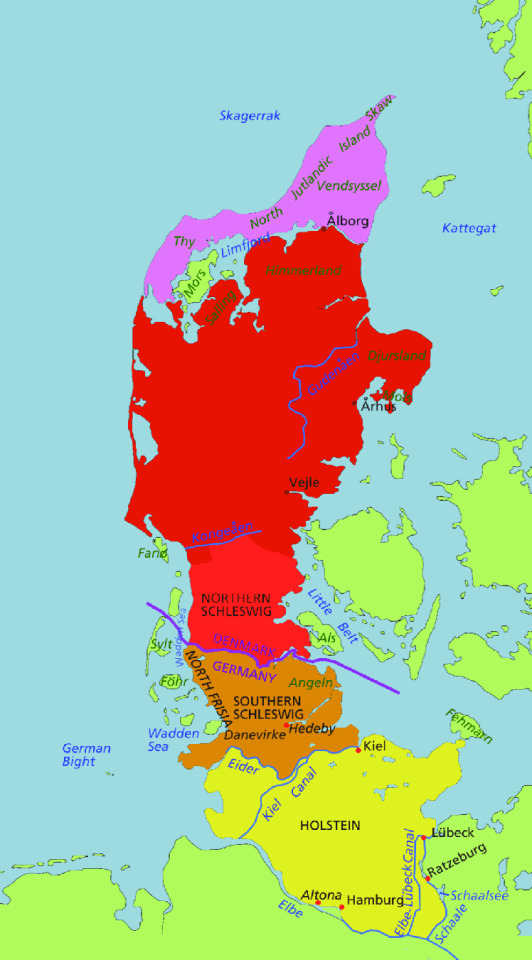
The Danish alphabet has 29 letters, including the 26 found in the English one and æ, ø, and å.
Upper Sorbian (hornjoserbšćina)
Upper Sorbian (Obersorbische Dialekte in the map) belongs to the West Slavic branch and is recognized as a minority language in Saxony, where its 13,000 native speakers live.
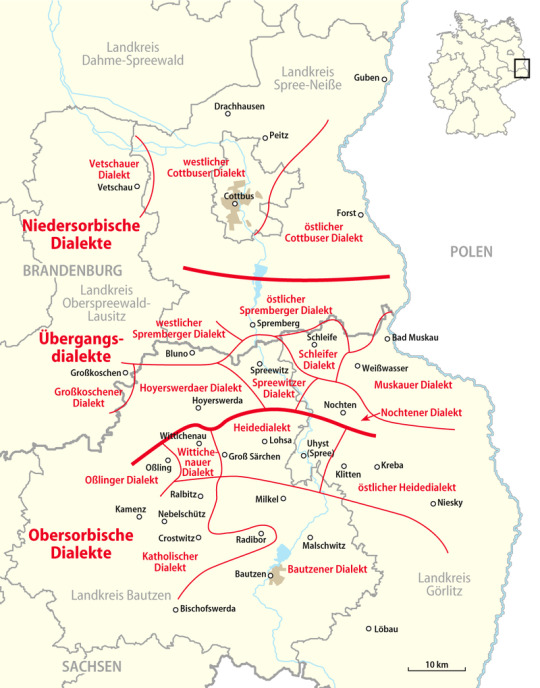
Its alphabet has 34 letters: a b c č ć d dź e ě f g h ch i j k ł l m n ń o ó p r ř s š t u w y z ž.
North Frisian (Nordfriisk)
North Frisian is part of the West Germanic branch and is spoken natively by 10,000 people in Schleswig-Holstein. It comprises 10 dialects, which are divided into two groups: insular and mainland.

Its phonology and orthography vary depending on the dialect, but there are 32 basic letters: a ä å b ch d dj đ/ð e f g h i j k l lj m n ng nj o ö p r s sch t tj u ü w.
Lower Sorbian (dolnoserbšćina)
Lower Sorbian (Niedersorbische Dialekte in the map of Sorbian dialects) is a West Slavic language spoken natively by 6,900 people in Brandenburg.
It uses the same letters as Upper Sorbian but adds ś and ź and uses ŕ instead of ř, bringing the total number of letters to 36.
Saterland Frisian (Seeltersk)
Saterland Frisian belongs to the West Germanic branch and is recognized as a minority language in Lower Saxony. It is spoken by 2,200 people and has three fully mutually intelligible dialects.
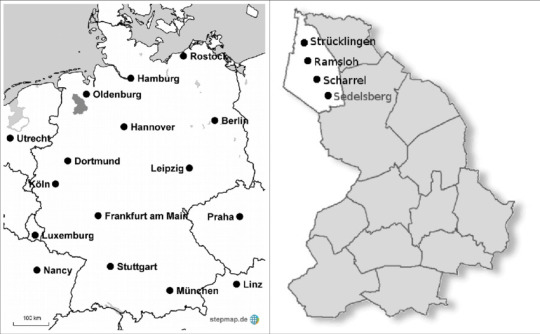
Its orthography has not been standardized yet, but there are 31 common letters: a ä b ch d e f g h i ie j k/kk ks kw l m n ng o oa ö p r s sch t u ü v w.
Here is Article 1 of the Universal Declaration of Human Rights in the native languages of Germany:
German: Alle Menschen sind frei und gleich an Würde und Rechten geboren. Sie sind mit Vernunft und Gewissen begabt und sollen einander im Geist der Brüderlichkeit begegnen.
Romani: Sa e manušikane strukture bijandžona tromane thaj jekhutne ko digniteti thaj capipa. Von si baxtarde em barvale gndaja thaj godžaja thaj trubun jekh avereja te kherjakeren ko vodži pralipaja.
Danish: Alle mennesker er født frie og lige i værdighed og rettigheder. De er udstyret med fornuft og samvittighed, og de bør handle mod hverandre i en broderskabets ånd.
Upper Sorbian: Wšitcy čłowjekojo su wot naroda swobodni a su jenacy po dostojnosći a prawach. Woni su z rozumom a swědomjom wobdarjeni a maja mjezsobu w duchu bratrowstwa wobchadźeć.
North Frisian: Ali Mensken sen frii, likwērtig en me disalev Rochten bēren. Ja haa Forstant en Giweeten mefingen en skul arküđer üs Bröđern öntöögentreer. (Sylt/Sölring dialect)
Lower Sorbian: Wšykne luźe su lichotne roźone a jadnake po dostojnosći a pšawach. Woni maju rozym a wědobnosć a maju ze sobu w duchu bratšojstwa wobchadaś.
Saterland Frisian: Aal do Moanskene sunt fräi un gliek in Wöide un Gjuchte gebooren. Joo hääbe Fernunft un Gewieten meekriegen un schällen sik eenuur as Bruure ferhoolde. (Ramsloh dialect)
Translation: All human beings are born free and equal in dignity and rights. They are endowed with reason and conscience and should act towards one another in a spirit of brotherhood.
5 notes
·
View notes
Note
Hello!!! I saw a post abt writing fic in Sorbian and im so curious whether you did? (I am currently in a crazy Krabat phase & interested in learning Upper Sorbian xD)
oh my gosh hi! i didn't think anyone but my mutuals would see that post, that is SO funny. it's so cool you want to learn the language tho!!
i sadly did not write a fic in sorbian, currently i don't really have the brain worms for it :/ if i ever do, i can let you know! though i only speak lower sorbian, which is definitely different from upper sorbian. i don't know if you know anything about the languages, but upper and lower sorbian are similar in the way that polish and czech are - you can kind of understand each other if you really try hard, but it's definitely not the same (and upper sorbian people speak so!! fucking!!! fast!!!)
like i said i don't really know anything about upper sorbian, muss less where to learn it online. i even asked my mother (who's teaching lower sorbian) but she doesn't know either. there's definitely resorces for learning, but since both upper and lower sorbian are minority languages you might not find anything in english, only german.
sorry i couldn't be more help!! let me know if there's anything else i can do for you!!
#absolutely delightful ask to receive than you!!!#feel free to ask me about related stuff if youd like!! id definitely be more help if it concerns lower sorbian but i can try :)
3 notes
·
View notes
Text
.
#ok so this probably really random and personal but whatever#so my hometown has a main street right? and my great grandfather was on the first town council & was active in the community#so the main street is named after him#& he's 'german'. kinda. both his parents were born in Lower Lusatia which is in East Germany & immigrated to Australia as teens#so he's Sorbian/Wendish but nobody knows what that is (including me until I was 16) so from all outwards appearances he was German#like his mother tongue was german & learnt at school his name is very German etc#anyway there's two parts of this#so when he was born my great great grandparents gave him an obviously German name & told whoever to write that down#on the birth certificate & this was the name he went by for a lot of his life#however when he was 35/40 he decided to buy land & he needed his birth certificate to complete the deal#but literally NO ONE with his name existed. however there was someone else with all the same details with an Obviously English Name#so someone change HIS NAME without telling anyone & we don't know who#and because it's the 1920s he decides to keep the name + he mainly went by a nickname anyway#also I imagining changing your birth certificate would be somewhat complicated in the 1920s?? idk tho#so remember the main street? yeah so it's his last name right?#the only part of his name not anglicized is his last name#there's a bakery on this street that supplies bread to the local supermarket#and a few months ago I happened to look at the bag more closely where they added their contact information#THEY SPELT THE STREET NAME WRONG#it could be a typo but it's on their socials too :/ & it's a small change#but distinctly anglicizing it (-mann -> -man)#it's probably not that much of a big deal but it pisses me off soooo bad#like don't touch that. don't do more :(#that's my grandmother's name#anyway 🤪🤪 descendant of immigrants thingz#bella talks
2 notes
·
View notes
Photo
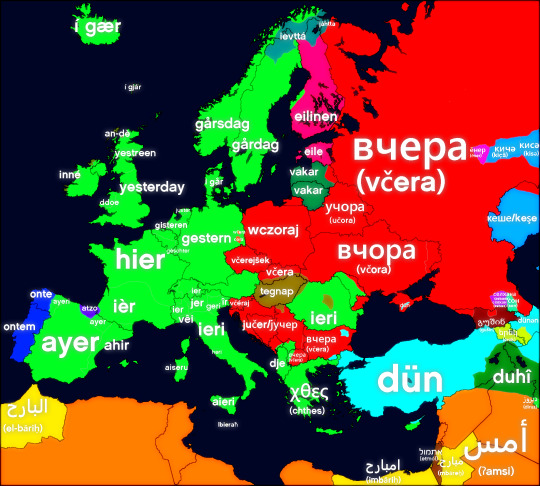
Word for "yesterday" around Europe.
by danielogiPL
Notes:
All of the languages are color coded by the roots of the word, which I have done research on. You might be wondering why a lot of the areas are green, despite them sounding way different; they all come from the Proto-Indo-European "dʰǵʰyés" (yesterday). Please note that I was not able to find if the Portuguese and Kurdish words are related to the green areas, so let me know if they actually are.
There are some languages where I couldn't find the translation, like Abkhaz, Gagauz, Karelian, Ossetian, Breton and Kalmyk. Please let me know any missing translations!
In contrast, many new languages have been added, including Scots (which I'm not sure how to draw the borders for, so I highlighted the rest of Scotland, please let me know how to draw the borders), Occitan, Aragonese, Ligurian, Piedmontese, Venetian, Frulian, Sardinian, Latin, Crimean Tatar and Sicilian. I also split Sorbian into Lower and Upper Sorbian, as these two are slightly different.
Multiple Arabic dialects use a different word than the standard version (including Cypriot Arabic, not shown on the map), though I was not able to find out if any more dialects use a different word. Let me know if they do!
118 notes
·
View notes
Text




The Smallest Slavic Nation
Lusatian Sorbs were able to keep their language and cultural traditions, despite of the centuries under the German rules and without their own statehood. At the present time, these Western Slavic people inhabit just few villages along the German-Polish border in Eastern Germany. The Lusatian lands are split now between two German states, Brandenburg and Saxony. The Saxon part is called Upper Lusatia. Its inhabitants speak the Upper Sorbian language, very similar to the Czech language. The part belonged to Brandenburg is called Lower Lusatia. The local Slavic minority speaks the Lower Sorbian language, more similar to the Polish language. - Vladimir Pomortzeff
88 notes
·
View notes
Text
The word “Slavs” in the Slavic languages
Old Church Slavonic: Словѣне (Slověne)
Ukrainian: Слов’яни (Slovjany)
Slovak: Slovania
Czech: Slované
Polish: Słowianie
Kashubian: Słowiónie
Silesian, Lower Sorbian: Słowjany
Upper Sorbian: Słowjenjo
Slovene: Slovani
Serbian, Macedonian: Словени (Sloveni)
Montenegrin: Словјени (Slovjeni)
In these languages the pronunciation of the root has shifted from /o/ to /a/:
Russian, Belarusian, Rusyn: Славяне (Slavjane)
Bulgarian: Славяни (Slavjani)
Croatian, Bosnian: Slaveni
#slavs#slavic#ukrainian#slovak#czech#polish#kashubian#silesian#sorbian#slovene#serbian#macedonian#montenegrin#russian#belarusian#rusyn#bulgarian#croatian#bosnian
183 notes
·
View notes
Text



Reorganised my language learning collection again. A lot of these I bought used and a lot of them are for travel, reference or for later.
List of languages:
"African" (12 language phrasebook including Arabic, French, Hausa, Malagasy, Portuguese, Shona, Swahili, Tswana, Wolof, Xhosa, Yoruba, Zulu)
Arabic
Bengali
Cherokee
Croatian
Czech
French
Galician
Greek
Guaraní
Hebrew
Hindi
Khmer
Latin
Malay
Lower Sorbian
Low German
Portuguese
Russian
Romanian
Spanish
Swahili
Urdu
Welsh
Yiddish
Zulu
20 notes
·
View notes
Text
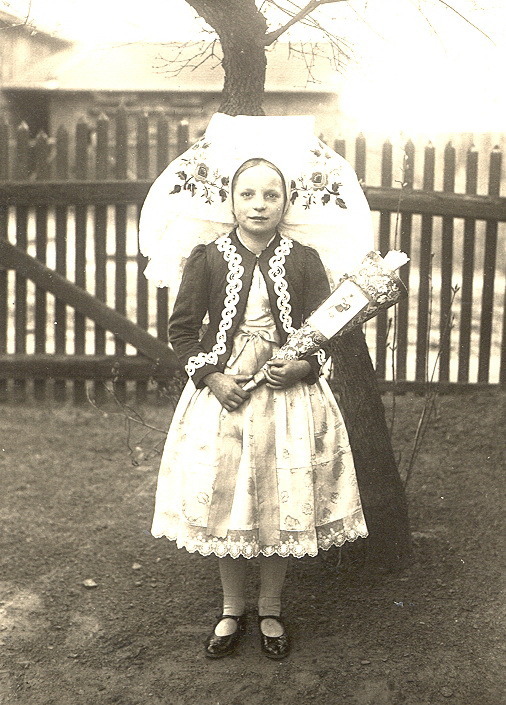
Lower sorbian school girl with a Zuckertüte (Słodka tutawa)
10 notes
·
View notes
Text
bored at work got lost in the wikipedia pages for upper and lower sorbian
3 notes
·
View notes
Text

SORAU / Niederlausitz - now ŻARY in Poland. Lower Lusatia (German: Niederlausitz; Lower Sorbian: Dolna Łužyca, Polish: Łużyce Dolne; Czech: Dolní Lužice) is a historical region in Central Europe, stretching from the southeast of the German state of Brandenburg to the southwest of Lubusz Voivodeship in Poland. Like adjacent Upper Lusatia in the south, Lower Lusatia is a settlement area of the West Slavic Sorbs whose endangered Lower Sorbian language is related to Upper Sorbian and Polish.
#pocztówka#litografia#post card#kartka#litho#Sorau#Żary#carte postale#poland#polska#Polonia#Polen#herb#Wappen#coat of arms#crest
1 note
·
View note
Text
It's been a long time. So neither this blog nor a blog about drawing helped me stay motivated.
The "problem" is easy for me - i don't have space, physical or mental. When I'm back from work, I don't feel ....well... save. I don't want to be interupted, bothered bu lound voices etc etc.
But the above might be just an excuse. I don't have much energy and motivation.
But today I wanted to say, after my birthday i decided to learn a language. First I though about japanese, but after a week it turns out i don't have time for regular practive and the questions "naze?" stareded to from in my head. And I don't have a precise answer. I like anime, I like japanese culture, but i don't watch anime anylonger and I don't discover japanese culture anymore.
Generally I feel a little bit guilty not to learn about my region but i get hyped about some other regions/places.
So i decided to maybe have some fun with upper sorbian / lower sorbian, as one of those slavonic languages. Purpose - none, exept linguistic curiosity.
0 notes
Text

‘50th Anniversary of NSK - January 1st, 1974’
Digital Collage, 375 x 375 mm, 2023
Fine Art Pigment Print under Acrylic Glass,
Black Aluminium Art Box
Nothing is further from my mind than to promote the no longer existing East German state by showing GDR symbolism while drunk with nostalgia. For some time now, however, badges from the GDR era have been appearing increasingly, which suggest that New Sorbian Art existed long before the political change in 1989. The badges mentioned show a deer or the head with antlers and oak leaves with the GDR coat of arms in the lower part and are made of cast metal or plastic. The deer is one of the visual anchors in the NSK universe.
An embossed lignite briquette recently appeared in an online auction house, which shows the identical deer motif as on the badge as well as the year '1974' and the words 'Prosit Neujahr (Happy New Year)' in two lines. Should this commemorative briquette be proof of the founding date of the New Sorbian Art? Then the East German NSK would have been founded on January 1st, 1974. It has not yet been possible to reconstruct where exactly this founding meeting took place in Lusatia on the night of December 31st to January 1st, 1974.
Time doesn't just move forward linearly. Traveling back in time on a timeline changes reality there as well as here in the now. It is impossible to imagine what would happen to the 'NSK State In Time' if, at sufficient speed, the space-time curvature made travel in parallel universes of the 'NSK State In Time' possible.
But wait a minute - the tree for the national identity of the Sorbs is the linden tree. But don't the oak leaves show that we are on the wrong track.
#sb2130#Bernhard Schipper#Neue Sorbische Kunst#NSK#Neue Slowenische Kunst#NSK State in Time#NSK State Lipsk#50 Jahre NSK#50.Jahrestag#50th Anniversary#Leipzig Artist#Sorbian Artist#nsk folk art
1 note
·
View note
Text
Random pictures of german folk clothing (Tracht)
Pictures are sourced from wikipedia.

Gutacher Tracht, from the black forest region (who have a lot of different costumes)

other black forest costumes

Bückeberger Tracht for special days , Lower Saxony

"Älbler-Tracht" in Württemberg

Sorbian tracht of the Spreewald region
1 note
·
View note
Text
Five steps of Wikipedia for Sunday, 24th September 2023
Welcome, Benvenuto, Bienvenida, Benvenuta 🤗
Five steps of Wikipedia from "Gerhard Adam Neuhofer" to "Lagoon". 🪜👣

Start page 👣🏁: Gerhard Adam Neuhofer
"Gerhard Adam Neuhofer (16 January 1773 – 12 December 1816) was a German deacon, teacher, philologist, historian and poet. He was born and died in Augsburg. ..."

Image by Walch
Step 1️⃣ 👣: Georg Lorenz Bauer
"Georg Lorenz Bauer (14 August 1755 – 13 January 1806) was a German Lutheran Theologian, and writer on his subject. ..."
Step 2️⃣ 👣: David Erdmann
"David Erdmann (28 July 1821 - 11 March 1905) was a German evangelical theologian and church historian...."
Step 3️⃣ 👣: Oder
"The Oder ( OH-dər, German: [ˈoːdɐ] ; Czech, Lower Sorbian and Polish: Odra; Upper Sorbian: Wódra [ˈwʊt.ʀɑ]) is a river in Central Europe. It is Poland's second-longest river in total length and third-longest within its borders after the Vistula and Warta. The Oder rises in the Czech Republic and..."

Image licensed under CC BY-SA 3.0? by Grzegorz Kilian
Step 4️⃣ 👣: Achterwasser
"The Achterwasser (Low German achtern = "rear, behind") is a lagoon forming a bay on the Peenestrom river, which flows into the Baltic Sea. This lagoon extends so far into the island of Usedom, that it is only separated from the Baltic Sea by a narrow barrier spit between Ückeritz and Zinnowitz. It..."

Image licensed under CC BY-SA 3.0? by Presse03
Step 5️⃣ 👣: Lagoon
"A lagoon is a shallow body of water separated from a larger body of water by a narrow landform, such as reefs, barrier islands, barrier peninsulas, or isthmuses. Lagoons are commonly divided into coastal lagoons (or barrier lagoons) and atoll lagoons. They have also been identified as occurring on..."

Image licensed under CC BY-SA 4.0? by Mwchalmers
0 notes
Text
Ź
U+179 "LATIN CAPITAL LETTER Z WITH ACUTE"
Represents the voiced alveolo-palatal fricative in Polish, Lower Sorbian, and Romani.
0 notes
Note
Which languages are you documenting?
basque, scottish gaelic, breton and upper and lower sorbian, mostly
0 notes